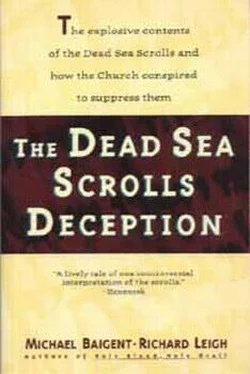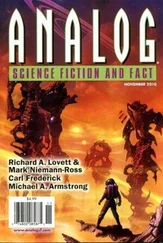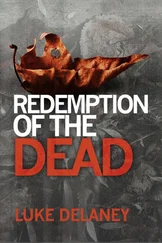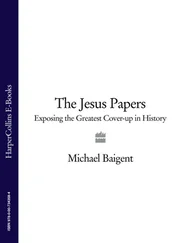the archaeological evidence from Qumran is not unambiguous as to the order of these two events… the thick layers of ashes suggests a very violent conflagration, better to be explained as a result of a conscious attempt to burn down the whole building; so the ashes may show the traces of an intentional destruction of Qumran. 10
Whether the fire was caused by earthquake or by deliberate human agency cannot be definitively established. Certainly the evidence offers less support to de Vaux than it does to Milik and Eisenman, who, on this unique occasion, are in accord. Nevertheless, many adherents of the consensus still invoke the earthquake, and it still figures with metronomic regularity in their texts.
In another instance, however, de Vaux’s misinterpretation of the evidence — or, to put the matter charitably, wishful thinking — was much more conclusively exposed. Very early in his excavations, he found a heavily oxidised coin on which, he said, he ‘believed’ he could discern the insignia of the Roman 10th Legion. 11Purporting to cite Josephus, he also said that the 10th Legion had conquered Jericho, eight miles away, in June of ad 68. Everything seemed to fit nicely. On the basis of his coin, de Vaux argued that Qumran must have been destroyed by the 10th Legion in ad 68. ‘No manuscript of the caves’, he later declared, waxing dogmatic on the basis of questionable data, ‘can be later than June, ad 68.’ 12
De Vaux had first described his discovery of the coin in 1954, in Revue biblique. He repeated his account five years later, in 1959, in the same journal. 13The ‘fact’ of the coin, and de Vaux’s emphatic dating on the basis of it, thus became enshrined in the established corpus of evidence routinely invoked by adherents of the consensus. Thus, for example, Frank Cross would write that the coin stamped with the insignia of the 10th Legion constituted ‘grim confirmation’. 14
De Vaux, however, had made two bizarre errors. In the first place, he had somehow contrived to misread Josephus, ascribing to Josephus precisely the opposite of what Josephus in fact said. Josephus most emphatically did not assert that the 10th Legion captured Jericho in ad 68. As Professor Cecil Roth demonstrated, of the three Roman legions in the vicinity, only the 10th was not engaged in the conquest of Jericho. 15The 10th Legion had remained a considerable distance to the north, guarding the top of the Jordan Valley. In the second place, the coin de Vaux had found proved not to be from the 10th Legion at all, or, for that matter, from any other. Although badly damaged and oxidised, the coin, when subjected to expert scrutiny, proved to have come from Ashkelon and to date from AD 72 or 73.
Here was a blunder that could not be equivocated away. De Vaux had no choice but to publish a formal retraction. This retraction, however, appeared only as a footnote in his opus L’archeologie et les manuscrits de la mer morte, published in French in 1961 and in English translation in 1973. ‘Mention of this was unfortunate’, de Vaux says laconically, ‘for this coin does not exist.’ 16
On the whole, de Vaux tended to be shamelessly cavalier in his conclusions about coins. When he found any that did not conform to his theories, he simply dismissed them. Thus, for example, he found one dating from the period between ad 138 and 161. He shrugged off its possible relevance with the comment that it ‘must have been lost by a passer-by’. 17By the same token, of course, an earlier coin, on which he attempted to establish his dating and chronology for Qumran, could also have been lost by a passer-by; but de Vaux seems not to have considered this possibility.
Of the archaeological evidence found at Qumran, coins have been particularly important to the international team and the adherents of their consensus. Indeed, it was on the basis of this evidence that they deduced the timespan of the community; and it was through their interpretation of this evidence that they established their dating and chronology. Prior to Eisenman, however, no one had bothered to question their misinterpretation. Roth and Driver, as we have seen, endeavoured to establish a chronology on the basis of the internal evidence of the scrolls themselves. De Vaux and the international team were able to discredit them simply by invoking the external evidence supposedly provided by the coins. That this evidence had been spuriously interpreted went unnoticed. Eisenman recognised that Roth and Driver, arguing on the basis of internal evidence, had in fact been correct. But in order to prove this, he had first to expose the erroneous interpretation of the external evidence. He began with the coin distribution, pointing out that they revealed two periods of peak activity.
Some 450 bronze coins were discovered at Qumran in the course of excavation. They encompassed a span of some two and a half centuries, from 135 BC to AD 136. The following table groups them according to the reigns in which they were minted:
1 coin from 135-104 BC
1 coin from 104 BC
143 coins from 103-76 bc
1 coin from 76-67 bc
5 coins from 67-40 bc
4 coins from 40-37 bc
10 coins from 37-4 bc
16 coins from 4 bc-6 ad
91 coins from 6-41 ad (time of the procurators)
78 coins from 37-44 ad (reign of Agrippa I)
2 Roman coins from 54-68 ad
83 coins from 67 ad (2nd year of the revolt)
5 coins from 68 ad (3rd year of the revolt)
6 additional coins more precisely from the revolt, too oxidised to identify
13 Roman coins from 67-8 ad
1 Roman coin from 69-79 ad
2 coins from 72-3 ad
4 coins from 72-81 ad
1 Roman coin from 87 ad
3 Roman coins from 98-117 ad
6 coins from 132-6 ad (revolt of Simeon bar Kochba) 18
The distribution of coins would appear to indicate two periods when the community at Qumran was most active — that between 103 and 76 bc, and that between ad 6 and 67. There are a total of 143 coins from the former period, 254 from the latter. For adherents of the consensus, this did not mesh as neatly as they would have liked with their theories. According to their reading of the scrolls, the ‘Wicked Priest’ was most likely to be identified as the high priest Jonathan, who lived between 160 and 142 bc — half a century before the first concentration of coins. In order to support his thesis, Father de Vaux needed a very early date for the founding of the Qumran community. He was thus forced to argue that the solitary coin dating from between 135 and 104 bc served to prove the thesis correct — even though common sense suggests that the community dates from between 103 and 76 BC, the period from which there is a concentration of 143 coins. The earlier coin, on which de Vaux rests his argument is much more likely to have been merely one that remained in circulation for some years after it was minted.
De Vaux ascribed particular significance to the disappearance of Judaic coins after ad 68 and the nineteen Roman coins subsequent to that year. This, he maintained, ‘proves’ that Qumran was destroyed in ad 68; the Roman coins, he argued, indicated that the ruins were ‘occupied’ by a detachment of Roman troops. On this basis, he proceeded to assign a definitive date to the deposition of the scrolls themselves: ‘our conclusion: none of the manuscripts belonging to the community is later than the ruin of Khirbet Qumran in AD 68.’ 19
The spuriousness of this reasoning is self-evident. In the first place, Judaic coins have been found which date from Simeon bar Kochba’s revolt between ad 132 and 136. In the second place, the coins indicate only that people were wandering around Qumran and dropping them; they indicate nothing, one way or the other, about the deposition of manuscripts, which could have been buried at Qumran as late as bar Kochba’s time. And finally, it is hardly surprising that the coins subsequent to ad 68 should be Roman. In the years following the revolt, Roman coins were the only currency in Judaea. This being the case, they need hardly have been dropped solely by Romans.
Читать дальше












